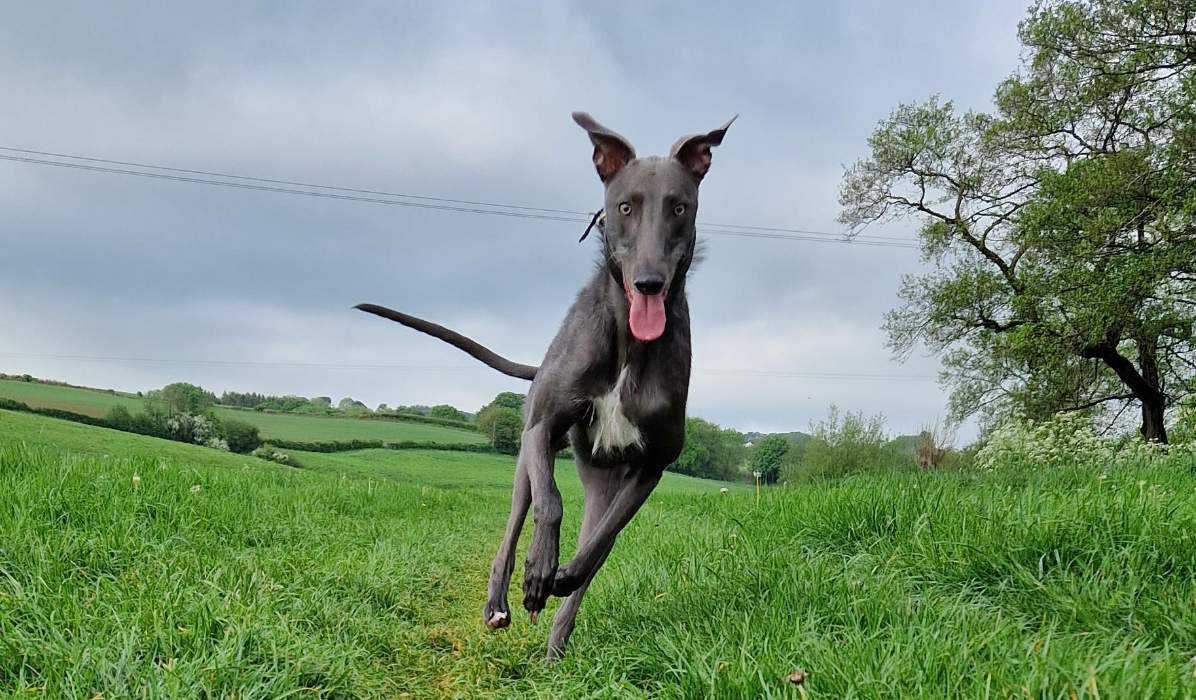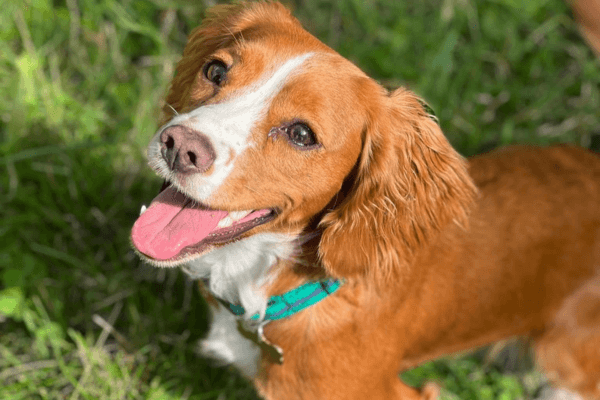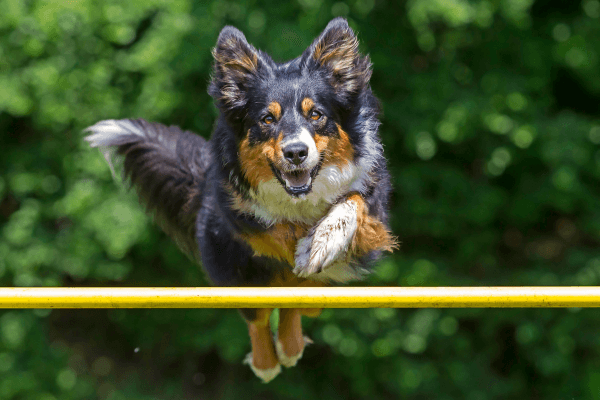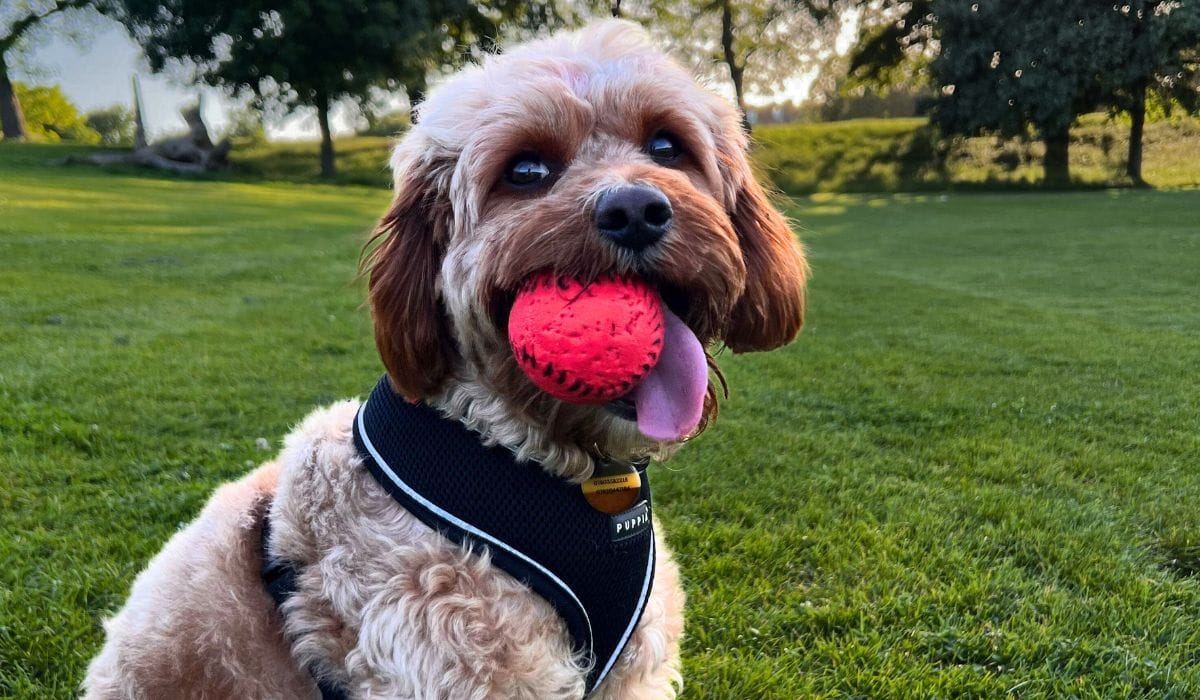Reviewed and written partly by Canicross expert, Dawn Richards; reviewed by our in-house vet.
So you've decided to start running and you want your furry friend to join in on the fun. Good news: it's totally possible!
In this guide, we'll teach you how to start running with your dog. Running is a great way to get in shape, and it can be even more fun when you do it with your pup by your side. However, there are a few things you need to take into consideration before starting out. We'll provide tips on how to train your dog to run with you, as well as tips for keeping both of you safe and healthy. Let's get moving!
Overview of article:
- What to consider before running
- Starting slow: couch to 5k
- Time of day to run
- Route planning
- Provisions
- Patience
- Running equipment
- Interview with Dawn, Canicross expert, and tips to start running
Before hitting the starting line
One of the most important things to consider before you start running with your dog is how much exercise they're used to getting. If your dog is a couch potato, they may not be able to handle a long run right away. Start by slowly increasing the amount of time you spend walking or running each day. Once your dog seems comfortable with this, you can start adding in short bursts of running. Remember to take it slow at first - both for your sake and for your pup's!
Does your dog's breed or age have an impact on running?
Another thing to keep in mind is that not all dogs are built for long-distance running. Some breeds are better suited for shorter distances, while others have conditions that make extended exercise difficult or dangerous. Be sure to consult with your veterinarian before you start running with your dog to make sure it's safe for them.
In a previous article, we have listed the dog breeds that make the best running buddies.
Age is also a really important factor when thinking about running with your dog. Even if they seem really keen, you shouldn't run long distances with a puppy as their body just isn't ready for that kind of strain yet. Also if they're older, although it does depend on how fit they are, be aware that some older pooches, or dogs with joint conditions for example, can struggle with distance running, or if running lots one day and then doing very little the next can experience some discomfort.
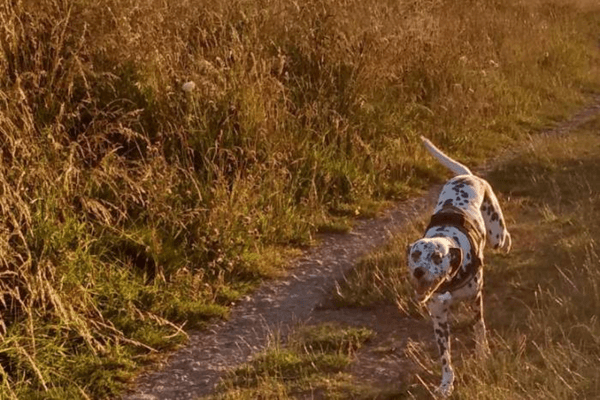
Start off slow - don't go out for a 5mile run on your first day
If you're a novice runner, then training your dog to run with you is a great way to bond with your canine companion while also getting some exercise. However, it's important to start slowly and build up gradually. If you try to go for a five-mile run right away, you (and your dog) will probably end up exhausted and discouraged. Instead, start with shorter runs and gradually increase the distance. If you keep at it, before long you'll be able to enjoy runs with your dog that are both fun and beneficial for your health.
Couch to 5K with dog
Every couch has a 5k somewhere inside of it. With a little (ok, maybe a lot) of dedication and determination, you and your couch potato pooch can turn that hunk of junk into a lean, mean, running machine! Just like with humans, doggy couch to 5k programs vary in length and intensity. And just like with humans, it's important to ease into things to avoid injury.
Start with short walks and gradually increase the distance and pace. Once you're both comfortable walking long distances, you can start adding some light jogging intervals. And before you know it, you'll be crossing the finish line together! So what are you waiting for? Get off the couch and start training for your next 5k today!
Here's a free printer-friendly schedule for a couch to 5k with dog plan. Or read up on the human-centred approach to couch to 5k on the NHS site.
Experienced runner?
If you're an accomplished runner yourself and want to train your dog to run with you, then you need to be extra attuned to your pup's needs. Slow and steady wins the race, and that's especially true when you're training your dog to run with you. Just like you wouldn't go out and try to run a five-mile race on your first day, you shouldn't expect your pooch to be able to keep up with you for long distances right away.
Start by taking them on short runs, gradually increasing the distance as they build up their endurance. And don't forget to give them plenty of breaks - after all, even the best runners need to stop and smell the roses (or in this case, lamp posts) every now and then. With a little patience and persistence, you'll soon be running side by side with your furry friend.
Choose the right time of day to run, taking into account the temperature and your dog's energy level
For many dog owners, running with their four-legged friend is the best way to start the day. But what is the best time of day to go for a run with your dog? The answer depends on a number of factors, including the temperature and your dog's energy level. In general, the best time of day to run with your dog is early in the morning or later in the evening, when it is cooler outside.
As well as making them overheat, if it's too hot outside, their delicate paw pads can also get burned on the pavement. And if they're not properly geared up for a long run, they may get tired before you're ready to head back home. By taking all this into account, you can ensure that both of you have a pawsitively fun time on your run.
If your dog is full of energy and ready to go, be sure to stay hydrated and take frequent breaks so that you both don't overheat. By choosing the right time of day to run, you can ensure that you and your best friend enjoy a fun and safe workout.
Plan out a route that is interesting and has plenty of distractions for your dog
If you're looking for the best running route for your dog, there's no need to go off the leash. Just follow these simple tips and you'll be on your way to a pawsitively perfect outing.
First, choose a route that has plenty of interesting smells and sounds to keep your pup distracted. A park or forest path is ideal, but even a busy city street can work if it's full of interesting scents.
Second, make sure the route has plenty of opportunities for pit stops. If your dog needs to take a break, it's best to have a place to do so before he gets too tired. This could include water fountains, benches, and even other dogs to play with.
And finally, look for a route with plenty of different surfaces. This will help keep your dog's paws from getting too sore.
By following these tips, you can create a safe and enjoyable running route for your pup.
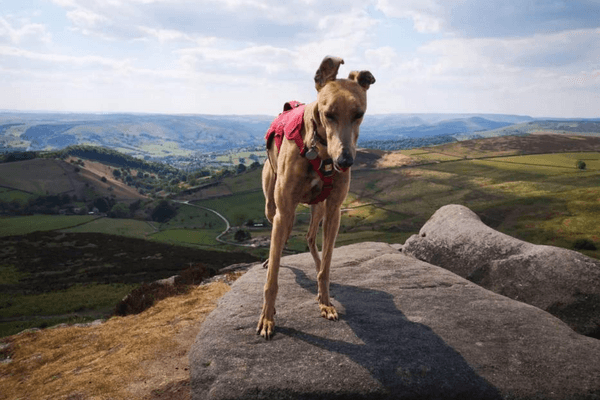
Carry water and snacks with you on your runs, as well as a first-aid kit in case of emergencies
What do you and your dog need to go running? Water and snacks are a must, especially when it's hot outside. And it's not just for the dog's sake - carrying water and snacks will help keep you hydrated and fueled during your run.
Just like humans, dogs can suffer from heat stroke if they overexert themselves in hot weather, which can be not much activity for certain breeds of dog! So be sure to have plenty of water on hand, take breaks in the shade often, or you may need to go another day when it's not as warm.
It's also a good idea to carry a first-aid kit, in case you or your dog have an accident on the trail. Bandages, antiseptic wipes, and gauze are all essential items. With a little preparation, you and your furry friend can enjoy many happy miles together.
Be patient - it may take some time for both you and your dog to get used to running together
Just like a marathon, running with your dog takes time, energy and patience. You both need to train and get used to the idea of running together before you can hit your stride. And just like a partner, there will be days when your runs together are amazing and other days when you'll want to pull your hair out. But if you're patient, eventually you'll be able to go the distance together. Who knows, you might even end up crossing the finish line hand-in-paw.
Do you need special running equipment?
Be sure to take the necessary precautions to keep both you and your dog safe while running. This means investing in a good lead and collar (or harness) that will allow you to keep a tight grip on your pup if they try to take off after a squirrel or another runner.
You should also bring along some water for both of you to stay hydrated, and consider investing in some doggy booties if you'll be running on pavement or other hard surfaces.
Frequently asked running questions answered by Canicross expert, Dawn from CaniX Canine Sports:
What are some of the challenges you have faced when trying to start running with your dog?
Many people are already running with their dog, though not using Canicross equipment. Running with a handheld lead can make the runner unbalanced, which could lead to strains or injury, whilst attaching to a collar can cause injury to the dog’s neck. People are often worried about tripping over their dog or being pulled over; both of which rarely happen, but it can take practice to feel confident. Some runners are concerned about training directional commands and other dog handling skills of Canicross.
What are some of the benefits of starting to run with a dog?
Running with your dog is a great way for you to build or maintain fitness. As you are working as a team, the bond between runner and dog improves; it's about having fun together. Many canicrossers have anecdotal evidence of how Canicross has helped their dog to be less reactive. Dogs are great running partners; they are always happy to join you for a run! Seeing their enjoyment is really motivating and can add a feeling of security for lone runners.
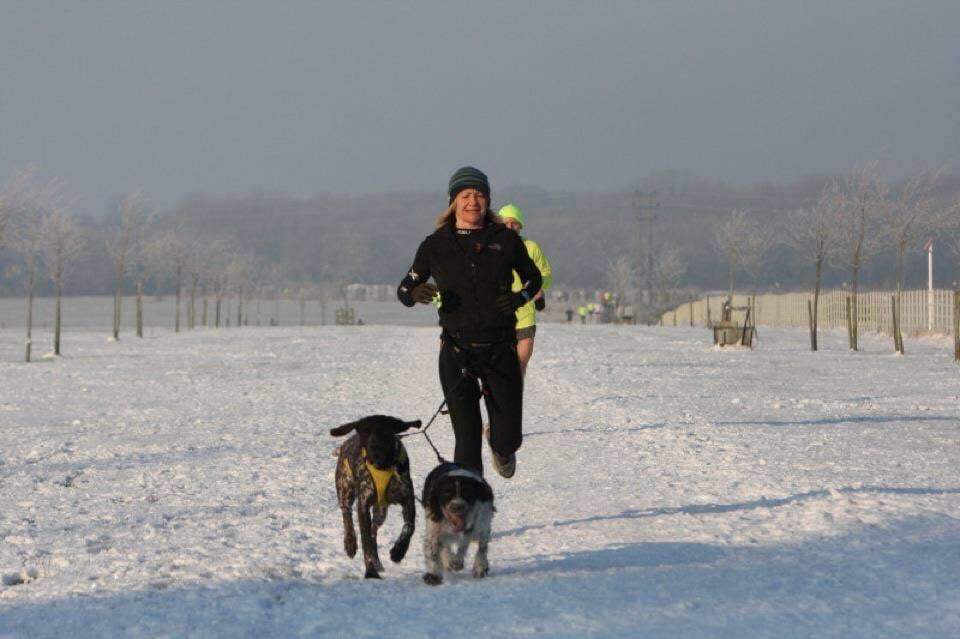
Do you have any tips for people who are just starting out?
Join a Canicross club or find your local Canicross Coach. Both will allow you to try a non-restrictive canicross harness for your dog, and a belt for you. Correctly fitted equipment will make the experience more comfortable and enjoyable for you and your dog. Dogs often learn from others around them, so will start to pull infront more, whilst a Canicross Coach will teach you how to run safely, including warmups for you and your dog, and the core skills of Canicross; directional commands, controlling pace, how to run downhill etc.
How have you made sure that both you and your dog stay safe when running together?
Careful selection of route is important. Try to avoid busy paths and trails. We do the absolute minimum on tarmac which can cause abrasive damage to dogs’ claws and pads and has a high impact on joints. In the warmer months we will go out early in the morning to avoid the heat, and plan routes that give access to water. A correctly fitted Canicross specific harness for your dog, will allow a full range of motion, with minimum impact on the natural way your dog moves in different gaits. Likewise, a correctly fitted Canicross belt and bungee line will protect your back and joints.
What's the longest distance you've ever run with a dog?
I have run just over marathon distance with my dog Ava. We built up to this distance over time, with Ava joining me on training runs. I have completed a 45-mile ultra-marathon with my dogs, but having several dogs meant that I was able to “relay” the dogs on different stages. The majority of Canicross specific events in the UK are 5km.
What surface do you prefer to run on?
I absolutely love trails; through forests or over the Mendip hills and Cheddar Gorge close to where I live. This offers a variety of surfaces from mud in winter to sandy tracks in the dryer weather, to grassy paths or hopping over a few rocky descents. Anything that is twisty and turning really piques the dogs’ interest and we feel like we are flying!
About Dawn:
Dawn Crook-Richards is a canicross coach, co-founder of Canicross Somerset and owner of CaniX, where she organises the longest standing canicross national championship in Great Britain alongside CaniX Fur Nations. Not only does this event attract participants from all over Europe but also Australia! In addition to being an incredible competitor herself; Dawn has 20+ years teaching experience including adult education.
With proper preparation, you and your speedy pal will be ready to hit the ground running - literally! Thanks for reading, and happy trails!
This article is for information only, and should never replace any advice, diagnosis or treatment from your veterinary surgeon. Always contact your local vet or out of hours vet without delay if you have any concerns about your dog. Always check with your vet before starting a new exercise routine with your dog.
Would you like some extra support with your dog?
We all need a helping hand from time to time, whether it's training tips, a little bit of guidance or some help with dog care. BorrowMyDoggy, connects you with trusted, local borrowers who'd love to spend time with your dog.
Activity Guides
How BorrowMyDoggy can improve your dog's life
Outdoor activities to do with your dog
How to start running with your dog
Best dogs for running adventures
Dog friendly things to do to stay active together
